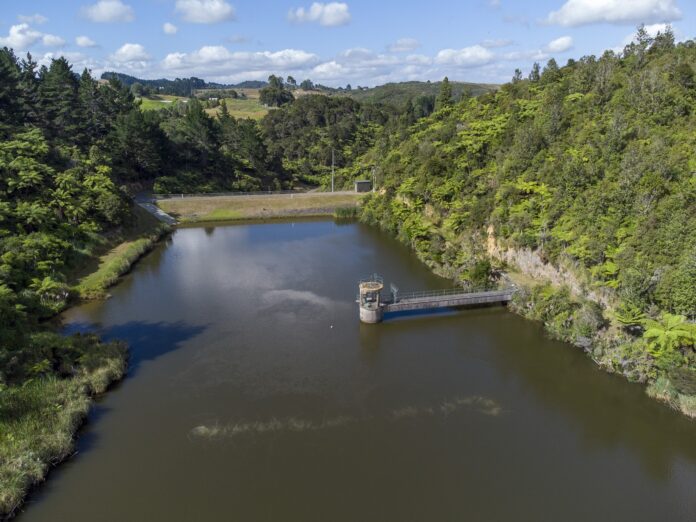Source: Auckland Council
A new water treatment plant in Papakura will help boost Auckland’s water supply by six million litres a day when it goes live today, Friday 5 February.
The project is part of Watercare’s drought response and is being built in two stages on the site of the old Papakura Water Treatment Plant, which has been largely demolished.
The total cost of reinstating the supply from the Ōtūwairoa/Hays Creek Dam, which includes the construction of a new water treatment plant and significant upgrades to Watercare’s water distribution system, is $68 million.
The project delivery has been staged to make sure the supply can be reinstated as quickly as possible.
Stage one included the construction of a temporary treatment plant and the replacement of the Papakura No. 2 watermain from the treatment plant to the intersection of Hunua and Dominion Roads, which will become operational today after only six months of design, consenting and construction.
The temporary plant treats water from the Ōtūwairoa/Hays Creek Dam which has been out of service for the past 15 years.
[embedded content]
The second stage will be a permanent treatment plant, which is already underway and expected to be completed by the end of the year.
When it is finished, it will be one of the most advanced water treatment plants in the country.
Auckland Mayor Phil Goff says, “This project will increase the resilience of Auckland’s water supply, boosting Auckland’s capacity initially by six million litres a day and later up to 12 million litres a day.
“It’s one of several significant upgrades to Auckland’s water infrastructure we’ve made as part of our $224 million investment programme to increase water supply for Aucklanders.
“With increasingly dry summers in recent years and the impact of climate change, this investment is critical to ensuring the resilience and reliability of Auckland’s water supply.”
Watercare head of operations excellence Priyan Perera says most of the stage one plant is designed to be relocated, so things like tanks, vessels, pumps and equipment can be moved to the stage two site as part of the new plant to minimise waste and overall project cost.
Some parts of the temporary treatment plant will become part of Watercare’s mobile water treatment systems fleet, which can be deployed either within its system in an emergency or to assist other water suppliers if required.
“We’re building two plants but with the equipment for one,” he says. “The two stages of the project are running in parallel – we are building the permanent plant while we are commissioning the temporary plant.”
Only two treated water reservoirs remain from the original water treatment plant and they have been upgraded and repurposed for the new plant.
“We have worked with a number of suppliers, consultants and contractors during the past six months, all of whom have done a great job and worked at pace for us,” says Perera.
“We had to decommission and demolish the former Papakura Water Treatment Plant, prepare working platforms, construct process equipment in multiple engineering workshops and the put a plan together to make this all fit on a very tight site. Fletcher Construction and their partners have continued this work and brought the first stage of this project together within an extremely tight timeframe.”
Because Ōtūwairoa/Hays Creek Dam has an unprotected catchment and the risk of contamination is higher, the treatment plant needs more complex treatment processes.
“We coagulate the water to bring together clay, silt, protozoa and bacteria into larger particles we call floc,” says Perera.
“After we separate the bulk of the floc from the water using our lamella plate clarifier, we use membrane filters to remove the remaining floc particles. Next, the water goes through the carbon filters to remove any taste and odour compounds. The carbon filters can also remove some pesticides or herbicides that may be present.
“The water then goes through a containerised UV disinfection system before it is further disinfected with chlorine.”
The treated water is then stored in an onsite reservoir before it is piped to the wider water supply network.
The new pipeline that connects the plant to the Papakura network has been a complex piece of work. A team within Watercare led the contractors, working at pace to install a large watermain in a constrained environment in a short space of time.
“Our pipeline team has worked very hard and coordinated with our water treatment plant team to achieve this incredible outcome,” says Perera.
The plant and pipeline will help supply Papakura and potentially Karaka in the future and will increase the network resilience.



